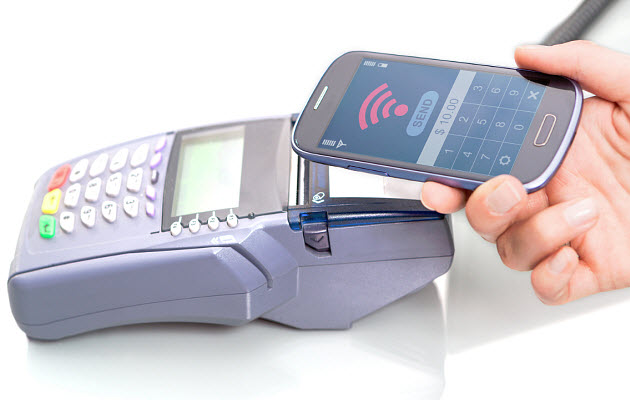Paytm will be working to expand its offline merchant network this year
Mobile payments firm Paytm is looking to expand its offline merchant base in India. The company intends to establish a stronger presence among physical stores in an effort to help merchants connect with the growing number of consumers that are beginning to use their mobile devices to purchase products. Vijay Shekhar Sharma, CEO of Paytm, notes that the company will be present offline “in every nook and corner.” Paytm has already established a considerable foothold in the digital commerce space and has become quite popular with online retailers.
Company intends to add 4 million offline merchants to its network by the end of 2016
Paytm intends to sign up 4 million offline merchants for its service by the end of this year. Currently, the company’s offline merchant network includes various small retailers as well as larger organizations such as More, a goods and grocery retailer. Paytm also includes Indian Oil among its clients and consumers can use their mobile devices to pay for petroleum at gas stations in many parts of the countries.
Paytm processes 3.5 million transactions every month
 Retailers using Paytm are given a sticker that they can place next to point-of-sale systems. Using a mobile devices, shoppers can scan this sticker in order to make a payment for products that they are purchasing. Paytm currently processes some 3.5 million transactions every month, totally approximately $8.5 million. The company predicts that the mobile payments being made at physical stores will grow significantly this year, with Paytm processing a predicted 35 million transactions a month by the beginning of 2017.
Retailers using Paytm are given a sticker that they can place next to point-of-sale systems. Using a mobile devices, shoppers can scan this sticker in order to make a payment for products that they are purchasing. Paytm currently processes some 3.5 million transactions every month, totally approximately $8.5 million. The company predicts that the mobile payments being made at physical stores will grow significantly this year, with Paytm processing a predicted 35 million transactions a month by the beginning of 2017.
Consumers are becoming more interested in mobile commerce
India has become a very active mobile commerce market. Several retailers are beginning to focus more heavily on the mobile space as consumers become more reliant on their smartphones and tablets. These consumers see mobile shopping as convenient, as they can use their devices to shop for products wherever they are. As more retailers begin accepting mobile payments in physical stores, consumers are beginning to use their smartphones rather than conventional forms of commerce to pay for products that they are interested in.
Mobile commerce in India may see major changes in 2016
Beaconstac has released a new report concerning the developments that may occur in India’s mobile commerce space throughout 2016. The report highlights the impact that the country’s financial technology startups are likely to have on the growing sector. Notably, these startups can enable much more than payments with their technology, giving consumers better services that can make their lives more convenient. Demand for such services is growing among Indian consumers, as more people are beginning to base their daily lives on mobile technology.
Financial technology is beginning to make the lives of Indian consumers more convenient
The report shows that financial technology startups are beginning to introduce convenient services that allow consumers to call for taxi rides, order movie tickets, and pay their utility bills all through simple mobile applications. These startups are also making mobile wallets more widely available. Consumers can use these digital wallets to store financial information, making the process of mobile payments even more convenient. The availability of such services and wallets will likely encourage more consumers to participate in mobile commerce this year.
Hyperlocal mobile commerce is gaining momentum throughout India
 Beaconstac’s report also predicts that the mobile commerce ecosystem is becoming “hyperlocal.” This refers to information and services that are oriented around a well-define community. Hyperlocal mobile commerce services are designed to connect consumers with retailers and other businesses within their immediate area. Companies interested in connecting with mobile consumers will need to find ways to engage their defined community, offering services and products that align with the needs of potential customers.
Beaconstac’s report also predicts that the mobile commerce ecosystem is becoming “hyperlocal.” This refers to information and services that are oriented around a well-define community. Hyperlocal mobile commerce services are designed to connect consumers with retailers and other businesses within their immediate area. Companies interested in connecting with mobile consumers will need to find ways to engage their defined community, offering services and products that align with the needs of potential customers.
Businesses are beginning to use new technology to provide better services to consumers interested in mobile commerce
With changes being introduced in the mobile commerce sector, companies involved in this space are likely to see significant reorganization in the coming months. Companies are feeling the need to better adapt to the changing interests of consumers and this may come in the form of using new technology and better marketing strategies to connect with mobile-centric consumers.
 Retailers using Paytm are given a sticker that they can place next to point-of-sale systems. Using a mobile devices, shoppers can scan this sticker in order to make a payment for products that they are purchasing. Paytm currently processes some 3.5 million transactions every month, totally approximately $8.5 million. The company predicts that the mobile payments being made at physical stores will grow significantly this year, with Paytm processing a predicted 35 million transactions a month by the beginning of 2017.
Retailers using Paytm are given a sticker that they can place next to point-of-sale systems. Using a mobile devices, shoppers can scan this sticker in order to make a payment for products that they are purchasing. Paytm currently processes some 3.5 million transactions every month, totally approximately $8.5 million. The company predicts that the mobile payments being made at physical stores will grow significantly this year, with Paytm processing a predicted 35 million transactions a month by the beginning of 2017.
 Beaconstac’s report also predicts that the mobile commerce ecosystem is becoming “hyperlocal.” This refers to information and services that are oriented around a well-define community. Hyperlocal mobile commerce services are designed to connect consumers with retailers and other businesses within their immediate area. Companies interested in connecting with mobile consumers will need to find ways to engage their defined community, offering services and products that align with the needs of potential customers.
Beaconstac’s report also predicts that the mobile commerce ecosystem is becoming “hyperlocal.” This refers to information and services that are oriented around a well-define community. Hyperlocal mobile commerce services are designed to connect consumers with retailers and other businesses within their immediate area. Companies interested in connecting with mobile consumers will need to find ways to engage their defined community, offering services and products that align with the needs of potential customers.